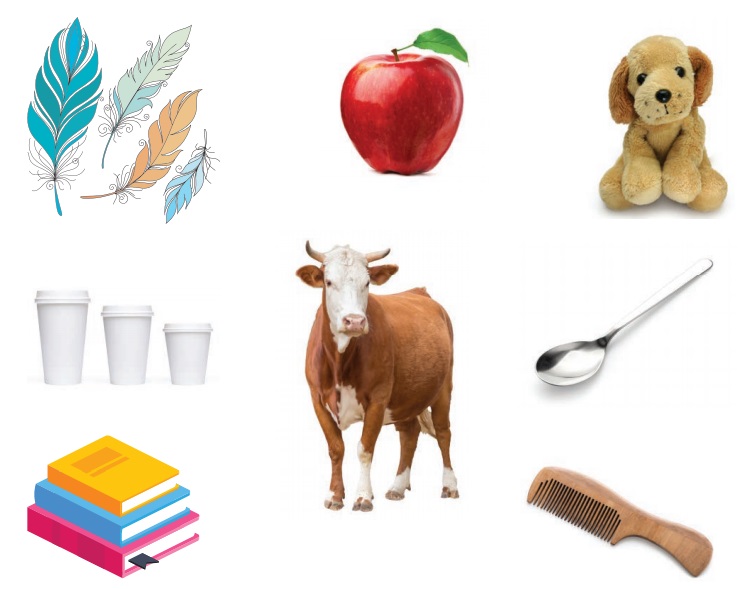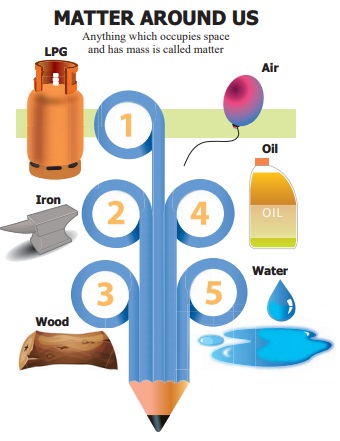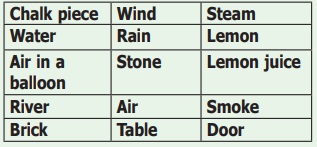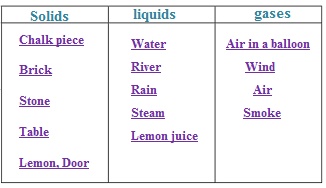Matter Around Us | Term 1 Unit 3 | 6th Science - Mass, Shape and Volume of Solids, Liquids and Gases | 6th Science : Term 1 Unit 3 : Matter Around Us
Chapter: 6th Science : Term 1 Unit 3 : Matter Around Us
Mass, Shape and Volume of Solids, Liquids and Gases
Mass, Shape and Volume of Solids, Liquids and Gases
Let us first take
any solid say a stone: Answer the following questions:
* Do you need a container to know the shape of a
stone ? Yes / No
* If you move the stone from the ground to a table
or place it on the shelf does its shape change? Yes / No
* A solid does not need a container; it stays
where it is because its particles are tightly packed into a definite shape
that, ordinarily, does not change. If you take the stone from the ground place
it on the table or shelf its shape and volume do not change.
Activity
2
Sit
together in groups of three. Look at the following objects. All these are
familiar to you. Are they all the same or different? Can you pick out a few
which you think are similar and group them? On what basis did you group them?
Is there only one way of doing it or more ways? Discuss with your group members
and note it down. You can group them according to their uses, the materials
with which they are made of or some other properties and also as living and
non-living things.
For example, pencil and books are used for studying, The bucket and the comb are made of plastic while the table and ladle are made of wood. The scrub brush and broom are rough but the toy bear is soft. Light can pass through the glass of water and the spectacles but not through the apple or iron box. The cow and the bird are living things while the rest are not. Water in the glass is a liquid but air in the balloon is a gas and the rest are solids. The feather and the paper cup can float but not the apple or the piece of stone. The rubber band can be stretched but not the comb. Thus we can see similarities and differences between things and group and sort them in many different ways.

Try
to fill in the following table

Try to make more
such tables based on the properties discussed above.
How many tables
could you make?
But one thing is
common to all the above. They are all MATTER.

Activity
3
Work in a group of two. Malar was
asked to group some items based on their physical states. This was the table
she made. Do you agree with her? Re do the table if you do not agree and submit
it to your teacher.

Answer:

How did you
classify the items of the above list as solids , liquids and gases? You should
have done it based on some properties- items like brick and door which are hard
comes under solids, things that flow comes under liquids and others which are
very light and can flow more freely comes under gases. Well, you are right.
Take a look at the figure given below. What do you observe?

Related Topics